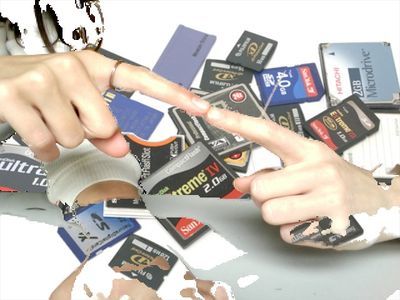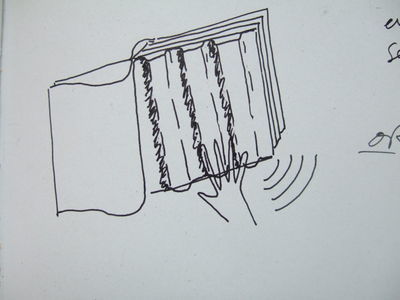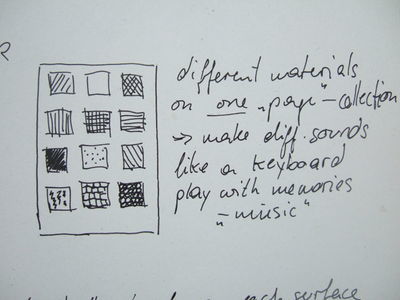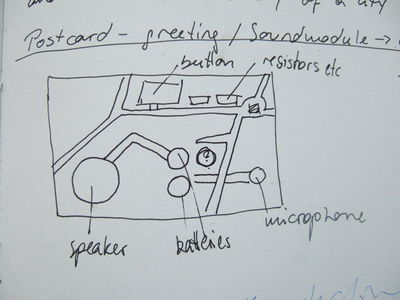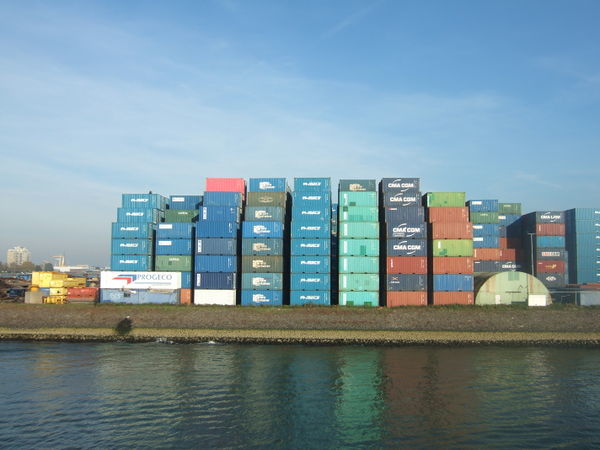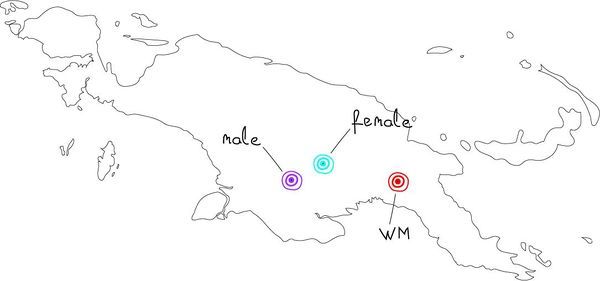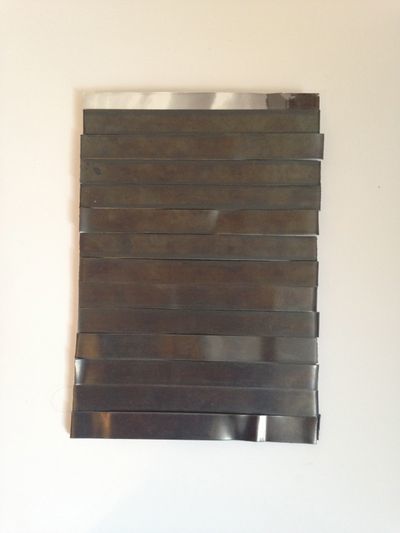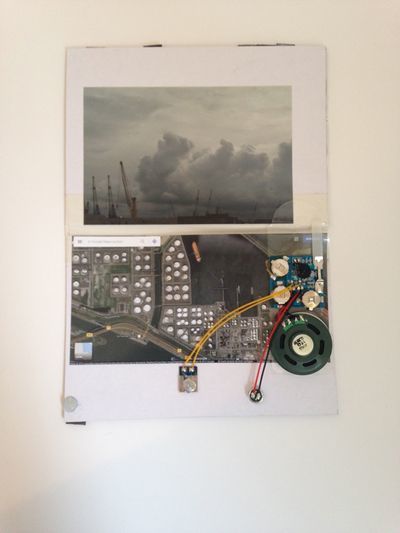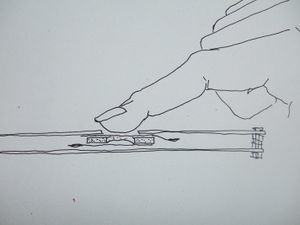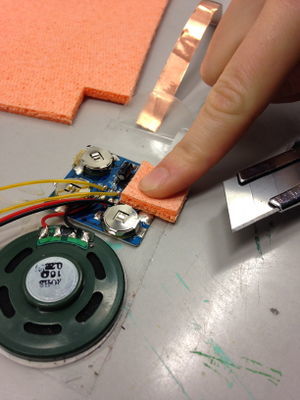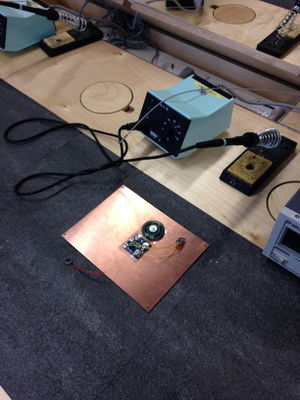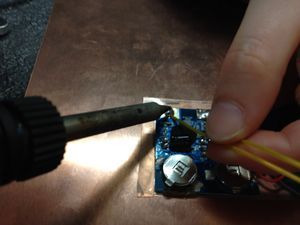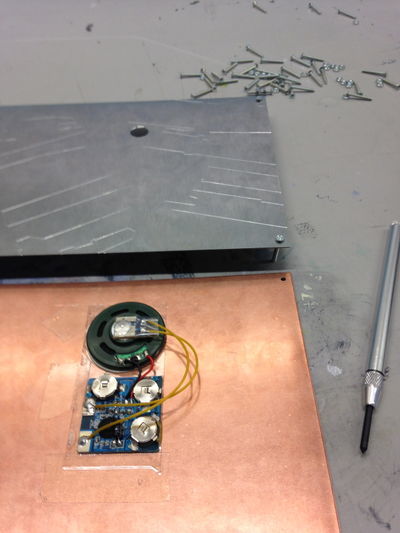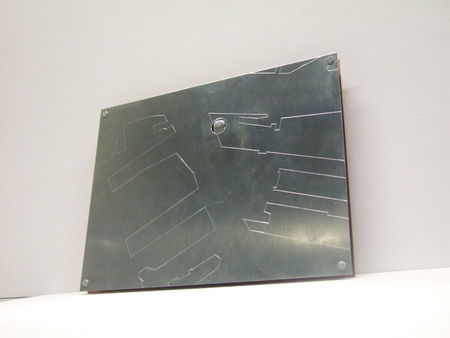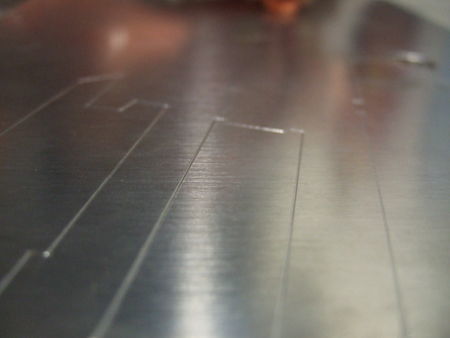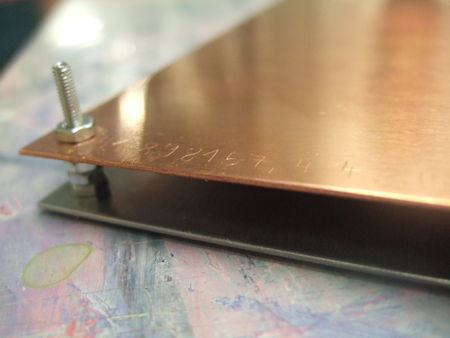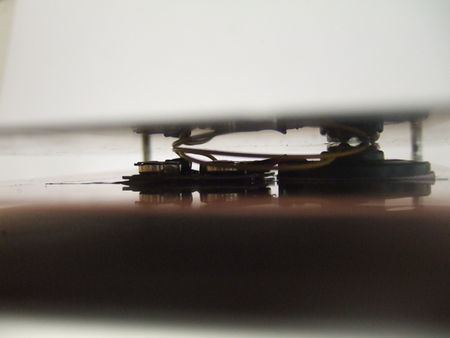CRAFTING FUTURE MEMORIES Laura L.
Contents
HAPTIC MEMORY
Project in collaboration with Laura Egger-Karlegger
Brainstorm
Movements of everyday life and how the body remembers them, for example the working situation and/or the differences between the hands of a factory worker and a graphic designer
Closeness to the body --> romantic aspect (to remember someones touch)
Let's Create! App for pottery: This App is based on working with clay. It's based on the haptic memory of clay. If there was no such memory, how would the sculpture look like?
haptic memory as trace
for example in nature: trails caused by animals or humans
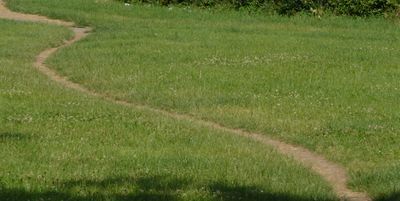
often used paths in old towns and staircases
traces of usage on technical devices f.e. the keys on your keyboard use the most;
The thought of traces caused by the human boday in nature, on technical devices, in old cities...made us think about the sound those movements make.
For example; Different sounds footsteps make on various materials. Sound of footsteps depends of the arichtecture (size of the room)
We became interested in the relation between touch and sound, in memory triggered by touch and sound.
haptic memory as trace for example in nature: trails caused by animals or humans, often used paths in old towns and staircases traces of usage on technical devices f.e. the keys on your keyboard use the most;
audio through movement
Research
"Haptic memory is a form of sensory memory that refers to the recollection of data acquired by touch after a stimulus has been presented. (It) is used regularly when assessing the necessary forces for groping and interacting with familiar objects."(…) "Haptics can be classified as a type of perceptual system which involves two subsystems: (One that) refers to anything skin related (and one that refers to) muscle sense. Haptics involves active, manual examination and is quite capable of processing the material traits of surfaces and objects."
Passive Haptic Learning - Mobile Music Touch
The Mobile Music Touch is a fingerless glove that can teach a wearer how to play piano melodies by sending motor vibrations through their hands. While wearing those gloves one can do other tasks, for the learning process is passive.
[1]
Material Collection
Pattern-book: an example tool for haptic memory, more precisely the memory of a certain material and pattern. One of our first ideas was to make a book with different materials that trigger a sound when the "reader" touches them.
Theremin
is an early electronic musical instrument controlled without physical contact by the thereminist (performer). (Leon Theremin, 1928)
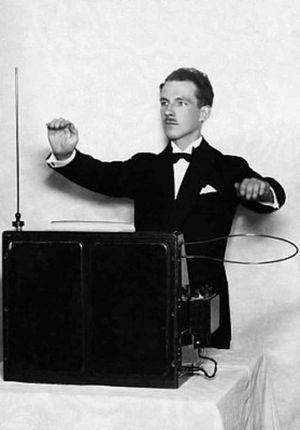
Over the rainbow played on the theremin. [2]
"Postcards"
postcard research:
Ansichtskarte - picture postcard. a visual (and written) greet from a certain site
material: thick paper or thin cardboard to send it without an envelope.
dimensions/format deduced from size of a human hand - haptic within its format
poetic approach, deceleration
memory of a certain locality/ site through haptic and audiovisual inputs
contradiction concerning material/weight - a heavy postcard/memory
record and delete mode - renew memory
personal/ hand-made, not purchased memory
without words/speechless. material speech.
Sketches / 1st ideas
Soundbook: every page another material → another sound
Material Collection: different materials on one page → different sounds → keyboard inspiration: patternbooks
Memory of a city: A map with buttons, different surfaces, sounds. The circuit of the soundmodule is shaped like a map - the electric components arranged like a network of roads/ buildings and so on. inspiratio: similarity of a map/top view and a circuit board.
Project / Concept
Postcard Memorycard (Prototype) For the Crafting Future Memories Project we will make our memories of Rotterdam tangible and audible. The starting point for our project the experience of walking a lot through Rotterdam. Coming to a new city makes is interesting to stroll around without having a specific goal. We want to catch the memory of this feeling and of the places we visited. Our focus lies on the harbour and metal as a material connected to this place. Metal seems so be a fitting material for crafting the memory of Rotterdam.
prototype
For the prototype we concentrated on the format of a greeting card. Staying close to the function of a greeting card, it's possible to open it and trough that triggering a metal sound. The front is made out of metal and the bottom side out of cardboard. Inside we put a photograph of the harbour and a google maps images. The recording and playing device is placed in the card too.
Greeting cards with noises are often used for birthday or weddings. Most of the time they show very kitschy and cliché motif. The shift in meaning and usage was interesting for us. Another important aspect was, that our greeting card is quite heavy, which in our eyes is questioning the original function and changing the meaning of the object.
The prototype turned out to be more like a collection to trigger memory on several levels. Through images, sound and touch.
Final Project
plan
For the final product we'll focus on touch and sound. (And a small reference to Rotterdam in form of an image). We are working with an poetic approach and trying to trigger memory with quite a small object. The touch of the metal and the sound make it possible to slow down and remind us of the location, where we listened to the soundscape and the ground we walked upon.
process
On the 3.11.2015 we went to the Rotterdamer Harbour to record sound.
To built the memory object/memorycard we reused the recording and playing device from a greeting card and change the mechanism to start the record. The sound won't start with opening a greeting card, but with pushing a button.
First try to build our own button, in oder to keep the recording function:
(material: coppertape + sponge) Was not stable enough, didn't work everytime.
So we reused the button triggering the recording function as a starting button.
We used the graphic print techniques of dry point to scratch "information" about the location, where the sound originates from, on the top and the bottom of our object.
final object
abstract
We are interested in the relation between touch and sound and decided to focus on our memory of Rotterdam. The touch of a material triggers a sound and therefore trigger the memory of a specific place/situation. With our memory (card) object we want to save a memory of Rotterdam in terms of material and sound. The long aimless walks through the streets and the harbour in the beginning of our stay here also serves as an inspiration. Metal is a material, which feels the closest to the city of Rotterdam, since it's a material we connect with the architecture and the harbor.
The object we made is closely related to a specific location, where we recorded the sound on a specific date.
The upper side of the object shows a dry point drawing of the harbour from above, the place, where we recorded the sound is highlighted with a hole and a button. Pressing the button, it's possible to listen to the sound as long as you press the button.
On the under side; we noted the date and the coordinates of the place where we recorded.
Future Prospects
First of all it would be interesting to change the function of the sound module, so it would be for example possible to record longer soundscapes.
It would be nice to make a collection of objects like this connected to other locations and cities. Also it could be interesting to return to our initial idea of a sound book, with a new material and sound on every page.
Another way to go would be, to start a collection of found material/objects/relicts. Instead of writing a memory into a material, we would then work with materials/objects that have a history within themselves and would originate directly from the location we want to remember with the object.
Furthermore,concerning metal, we also thought about working with rust. Using screen printing or a sort of stencil technique to apply a film of rust preventive on a metallic surface. Then put it outside and wait for the corrosion to proceed.
